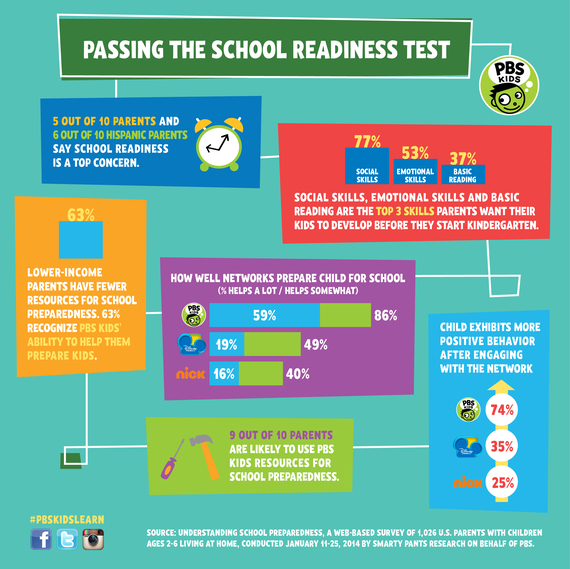In the ongoing dialogue about how to best prepare students for the future, attention has been focused on our country's youngest learners. Recently, researchers have demonstrated that targeted education for children under five can significantly bolster their future academic and social success. Economists cite the benefits of investments in early education, with one recent study showing a seven to ten percent return on every dollar. And politicians from both sides of the aisle have acknowledged that early learning is a key ingredient in preparing our young people for the global economy.
As we think about how to develop programs and tools that reach our youngest learners, we can't afford to lose sight of our responsibility to serve all children, especially those from low-income families, who already find themselves at risk of falling behind before they start school. Low-income children, who tend to have less access to basic education before five, often begin school in a deficit that can be nearly impossible to erase. Later in life, they are more likely to drop out of school, earn less, and fall victim to health problems like high blood pressure and obesity.
Educators and experts are not the only ones wondering how to best prepare young children for the future. According to a new study by PBS KIDS, nearly half of all parents of children ages 2-6 worry that their child will not be adequately prepared to start elementary school.
So where do these parents of young children turn for help? Increasingly, they are looking to media. According to a recent survey from the Joan Ganz Cooney Center, parents report that children ages 2 to 4 have the highest exposure to educational media of any age group, averaging over 75 minutes per day viewing television or using online programs.
But this doesn't paint a complete picture of how parents are using media to prepare their kids for school. There's a perception that apps and computer games dominate the educational media world, but in fact, that's not the case. While it's true that almost twice as many children have used mobile media compared to two years ago, and the average amount of time children spend using mobile devices has tripled, a recent report from Common Sense Media made it clear that television still dominates, especially for kids from lower-income households.
This makes sense. Families may not have the budget for a home computer or a mobile device dedicated to their children's use. And some of these parents may not have strong literacy skills, often making it unlikely that they will have books available to their children at home. But they are likely to have a television. And, it's even more likely they are tuning in to PBS KIDS. In fact, PBS KIDS reaches nine million low income families.
Over the course of a year, over eighty percent of our nation's children watch PBS.* Parents have named PBS KIDS -- including apps, games and television shows -- as the most popular and trusted educational resource in the marketplace today. In our recent report, nearly two-thirds of parents from families most in need reported that PBS resources helped "a lot" to prepare their children for school.
As we discuss how to best help prepare children for school, I think it's also important to identify exactly what skills parents need help teaching their children. According to our recent school readiness survey, parents identified basic math and literacy skills as important, but they also flagged social emotional skills like cooperation, following directions and controlling emotions as crucial for school readiness. We were pleased, but not surprised, to learn that when it comes to these essential social emotional skills, parents overwhelmingly turn to television to teach their children. From the original "Mister Rogers" to the re-imagined "Daniel Tiger's Neighborhood," we've known for a very long time that television can be a powerful way to teach kids social and emotional skills while helping them to learn about the importance of everything from organizational skills to self care and self control. But this is more than just anecdotal. In fact, nearly three-quarters of parents say that their child exhibits more positive behavior after engaging with PBS KIDS.
I'm very proud of the work PBS has done to prepare our youngest learners, but it's not enough. As a country with a common interest in preparing our kids for the future, our investments must cross industries, economic groups and party lines -- and they must meet the needs of all young children. We can't be complacent about the opportunity gap that exists between advantaged and disadvantaged children or the opportunity we have today to meet their needs with educational media tools and resources to ensure that all children are ready to learn when entering elementary school.
*(Nielsen NPower, 9/24/2012-9/22/2013)
